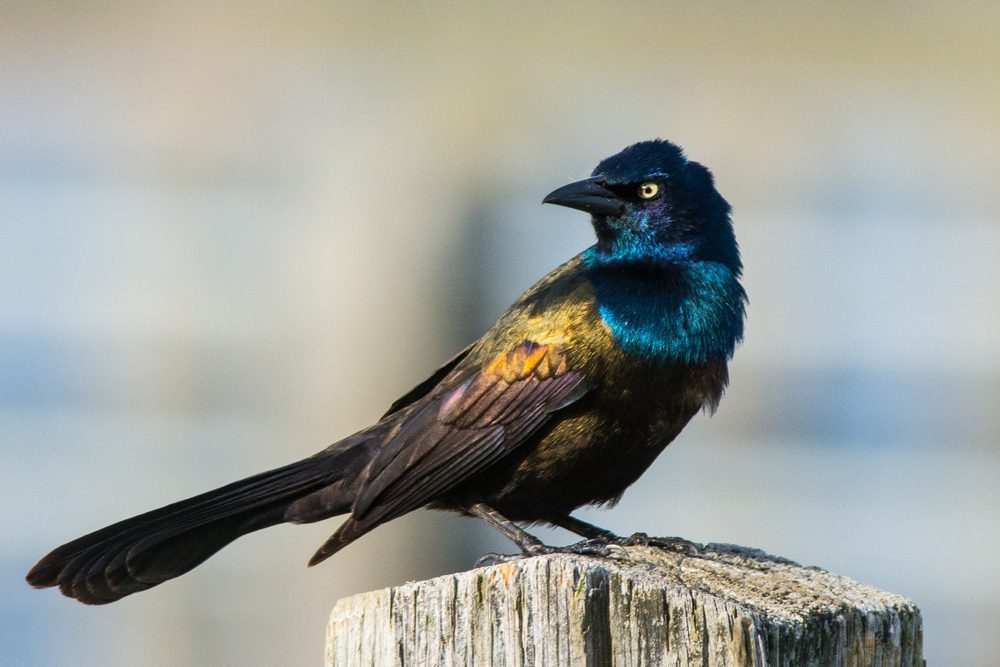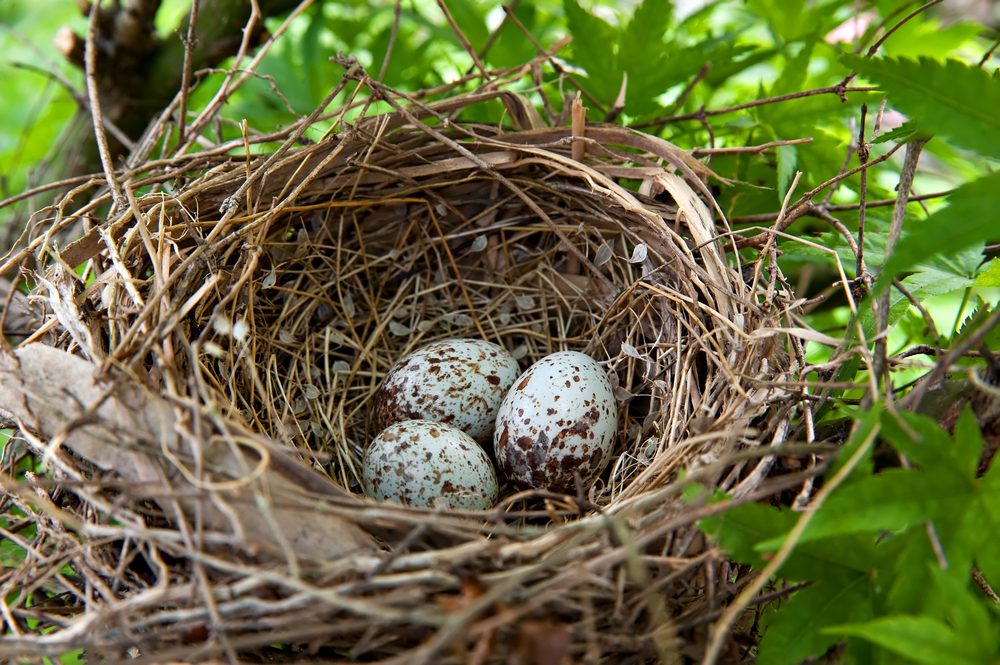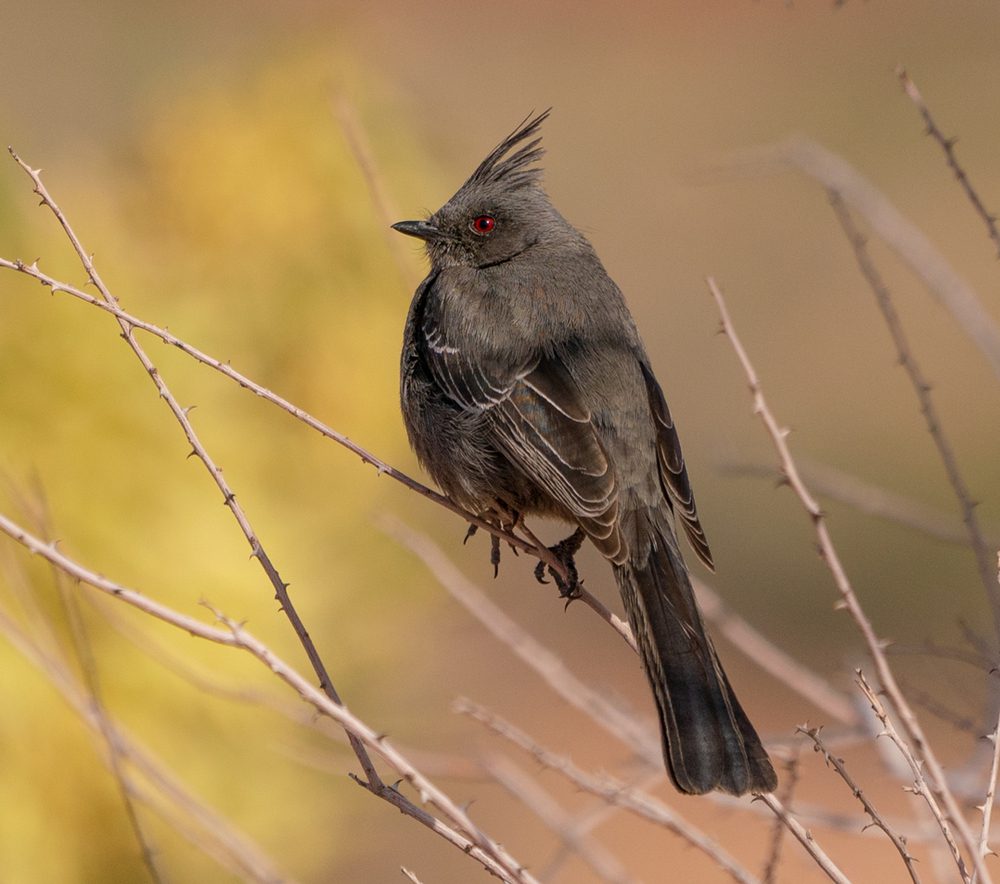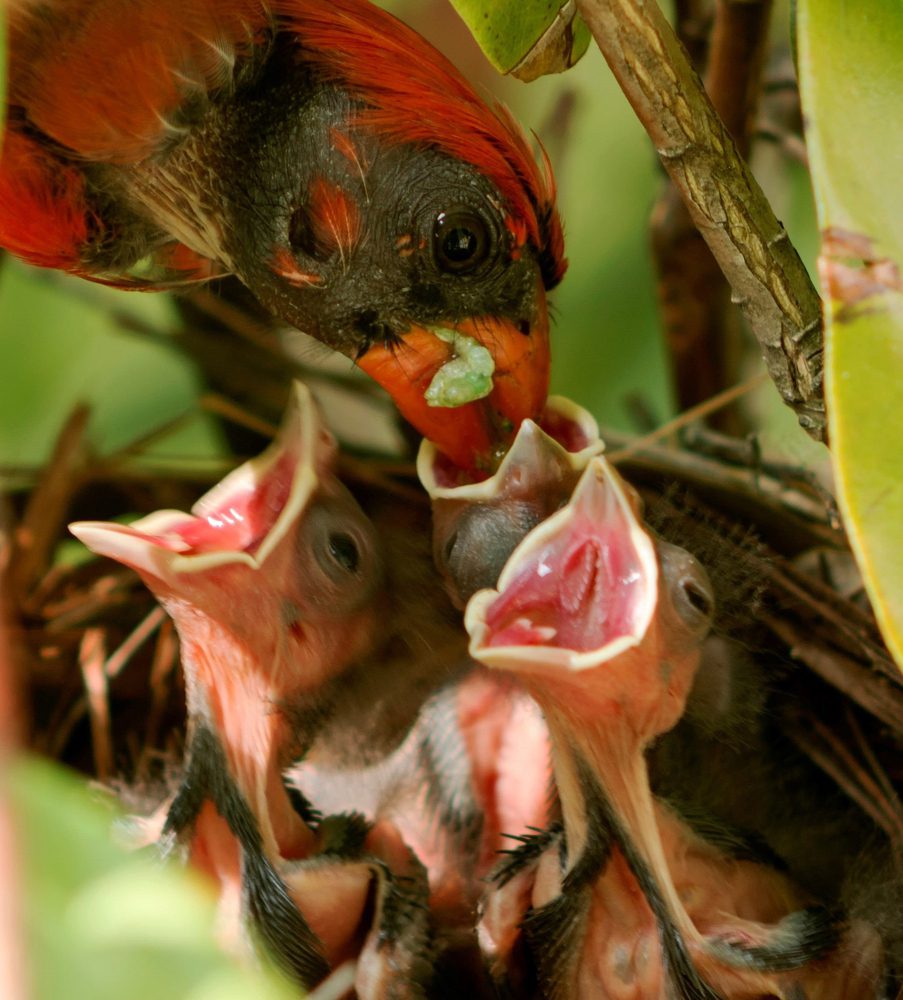The diverse range of black birds in Michigan species that captivate birdwatchers. From the ubiquitous Red-winged Blackbird belting its “konk-la-ree” song to the elusive Rusty Blackbird passing through on migration, black birds hold an air of mystery and excitement for avid birders.
While European Starlings, Common Grackles, and Red-winged Blackbirds frequent backyards and open fields, rarer species like the Eastern Towhee and Bobolink inhabit dense thickets and tall grasslands. The variety of habitats in Michigan attracts black birds with differing nesting and feeding preferences.
This guide dives into the natural history of Michigan’s black birds to showcase their unique traits and behaviors. We’ll highlight the best places and times to spot these species in their stunning breeding plumage and intricate winter coats. Whether a casual hobbyist or seasoned vet, birdwatchers of all skill levels will discover helpful tips to better enjoy Michigan’s black birds.
Table of Contents
1. Red-Winged Black Birds in Michigan
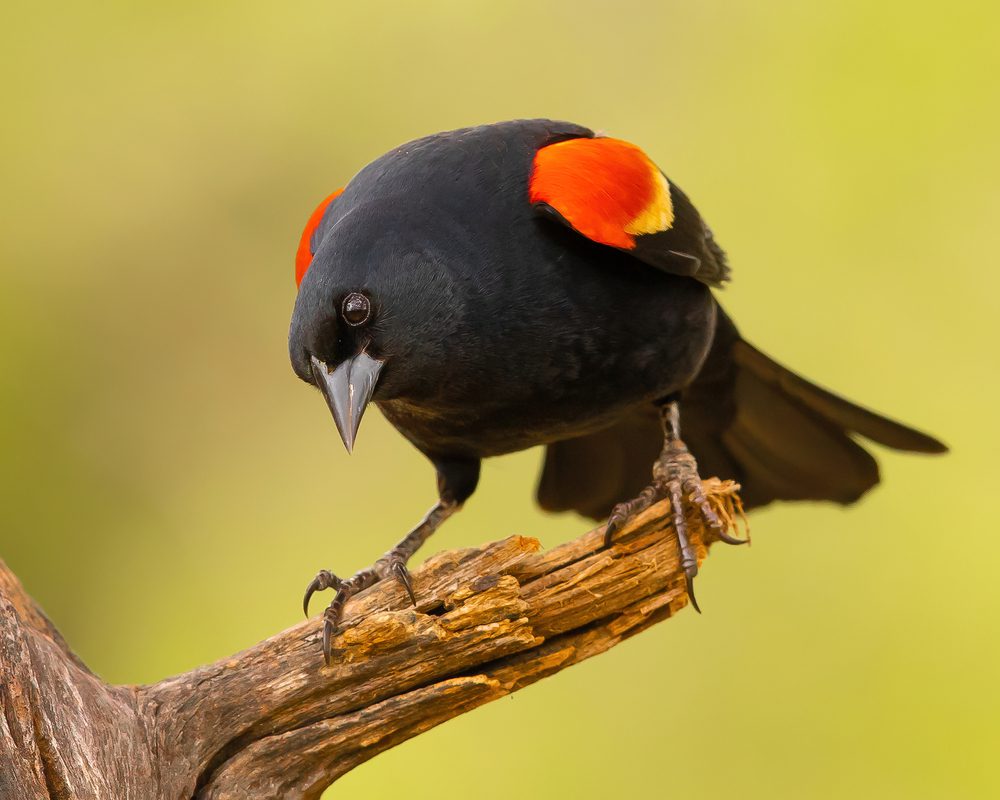
The Red-Winged Blackbird (Agelaius phoeniceus) is a fascinating bird species that can be found throughout Michigan. With its striking appearance and unique behaviors, it is a favorite among birdwatchers. Here is everything you need to know about this enigmatic black bird:
Appearance:
The adult male Red-Winged Blackbird is easily recognizable with its glossy black feathers and distinctive red shoulder patches, or epaulets (Keyword: male red-winged blackbird).
Females, on the other hand, have a more subdued appearance, with brown streaks on their feathers.
Both males and females have a slender body shape and a long tail, adding to their elegance.
Habitat and Distribution:
Red-Winged Blackbirds are commonly found in open fields, marshes, meadows, and wetlands, making Michigan’s diverse landscape an ideal habitat for them (Keyword: open field).
They are a native bird species to North America, including Michigan, and can be spotted in both rural and urban areas (Keyword: urban area).
Behavior and Vocalization:
During the breeding season, male Red-Winged Blackbirds establish territories by singing from prominent perches (Keyword: breeding season).
Their song is distinctive and consists of a series of “conk-la-ree” notes, which can be heard from a distance.
Males also use their flashing red shoulder patches to display dominance and attract mates.
Diet and Feeding:
Red-Winged Blackbirds are omnivorous and have a diverse diet. They feed on insects, seeds, berries, and occasionally small vertebrates.
They are known to be opportunistic feeders, taking advantage of available food sources in their habitat (Keyword: opportunistic feeder).
Breeding and Nesting:
These birds are known to be polygynous, meaning that a male can have multiple female mates (Keyword: breeding season).
Females build the nests using wet vegetation, which are often suspended in reeds or cattails over water bodies (Keyword: nests of other species).
They are fiercely protective of their nests and will defend their territory vigorously.
Interesting Facts:
Red-Winged Blackbirds are one of the most common bird species in North America (Keyword: most common bird).
They are highly adaptable and can thrive in a range of environments, including agricultural fields and open woodlands (Keyword: adaptable bird).
2. Common Grackle
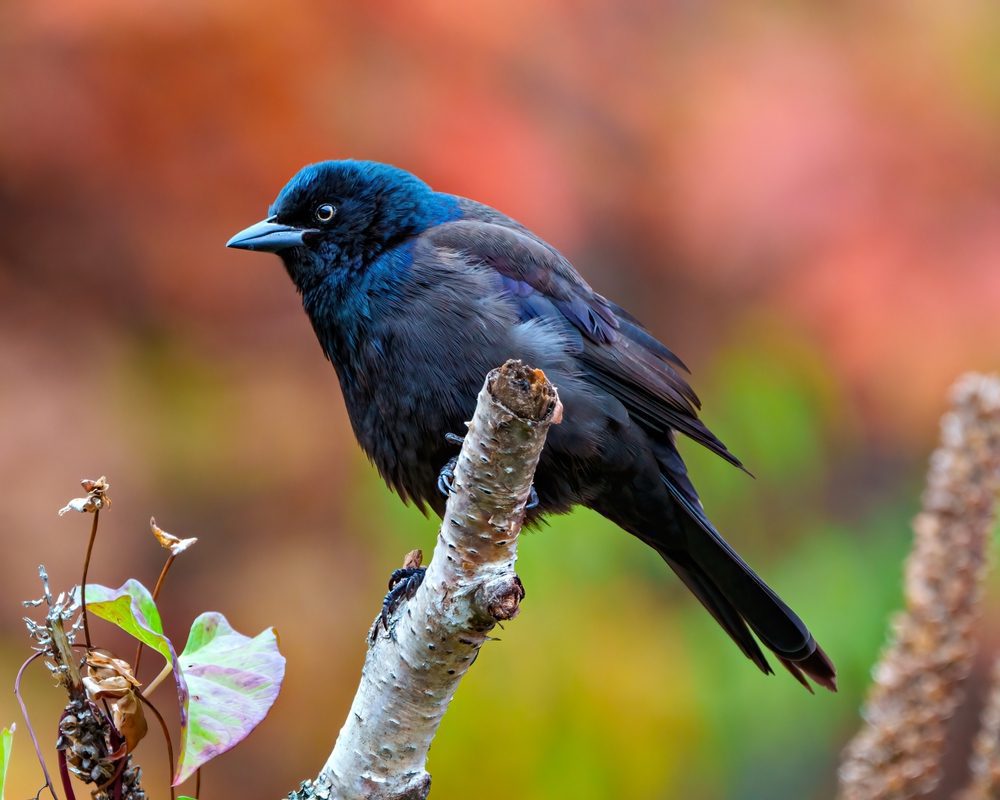
The Common Grackle, scientifically known as Quiscalus quiscula, is one of the most striking black birds you can spot in Michigan [1]. With its glossy black plumage and piercing yellow eyes, this bird is hard to miss. Here’s everything you need to know about the Common Grackle:
Appearance:
The Common Grackle is a medium-sized black bird with a length of about 12-13 inches.
Its plumage is predominantly black, but it may appear iridescent with hints of blue, green, or purple in the right light.
One distinguishing feature of the Common Grackle is its long, keel-shaped tail, which adds to its elegance in flight.
Males and females have similar appearances, with the males being slightly larger in size.
The eyes of the Common Grackle are a vibrant yellow, standing out against its dark feathers.
Habitat and Distribution:
Common Grackles are year-round residents of Michigan, making them a common sight in both rural and urban areas.
They can be found in various habitats, ranging from open fields and meadows to woodlands and even suburban areas.
These adaptable birds are known for their ability to exploit different food sources and nest in diverse environments.
Behavior and Diet:
Common Grackles are highly social birds and are often found in large flocks, especially during the breeding season.
They are opportunistic feeders, consuming a wide variety of food including insects, fruits, seeds, and even small vertebrates.
These birds have been known to visit bird feeders, so you might catch a glimpse of them if you offer a suitable food source.
Nesting and Reproduction:
Common Grackles build their nests in trees, shrubs, or even on man-made structures.
They construct cup-shaped nests using twigs, grass, and other materials, often choosing to build near water sources.
It is not uncommon for Common Grackles to engage in “brood parasitism,” where they lay their eggs in the nests of other bird species, leaving the host species to raise their chicks.
Interesting Facts:
The Common Grackle is known for its distinctive and complex vocalizations, which include a variety of calls, chatters, and croaks.
While considered a blackbird, the Common Grackle is actually a member of the icterid family, which includes other blackbird species and relatives like orioles and
3. Brown-Headed Cowbird
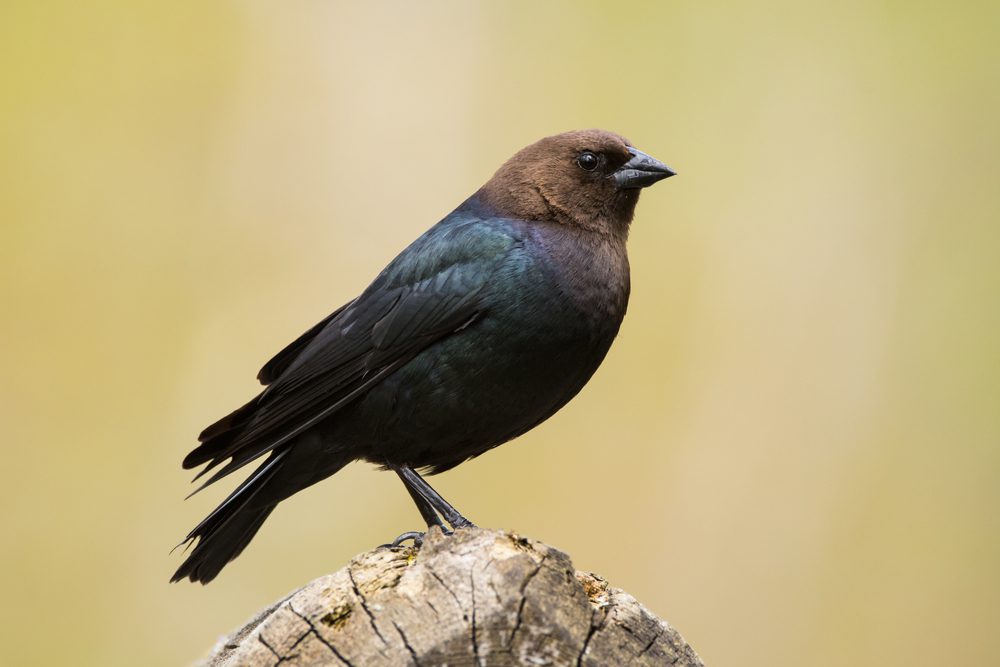
The Brown-Headed Cowbird is a fascinating black bird species that can be found in Michigan. Here’s everything you need to know about this enigmatic bird:
Appearance :
The Brown-Headed Cowbird is mostly black with a distinct brown head.
The males have a glossy black body and a prominent brown head, while the females have a dull grayish-brown plumage.
Breeding Season and Behavior (Keywords: brown-headed cowbird, breeding season, opportunistic feeder, nests of other species):
The breeding season of the Brown-Headed Cowbird begins in late spring and extends through the summer months.
This black bird species is known for its unusual breeding behavior. Instead of building its own nest, the female cowbird lays its eggs in the nests of other bird species, a behavior known as brood parasitism.
The cowbird eggs mimic the appearance of the host bird’s eggs, ensuring that they are accepted and incubated by the host bird.
Habitat and Range :
The Brown-Headed Cowbird is adaptable and can be found in a variety of habitats, including open fields, woodland edges, and agricultural fields.
It is a common sight in both rural and urban areas throughout Michigan.
Feeding Habits :
The Brown-Headed Cowbird is an opportunistic feeder with a diverse diet that includes insects, seeds, and grains.
This black bird species often forages on the ground, searching for food in open areas.
Interaction with Other Bird Species :
As mentioned earlier, the Brown-Headed Cowbird is known for its brood parasitism behavior. This means that the cowbird eggs are laid in the nests of other bird species.
The eggs of the cowbird hatch earlier than the eggs of the host bird, giving the cowbird chicks a competitive advantage in receiving food from the host parents.
Some bird species, however, have evolved defenses against cowbird parasitism and can recognize and reject cowbird eggs.
4. European Starling
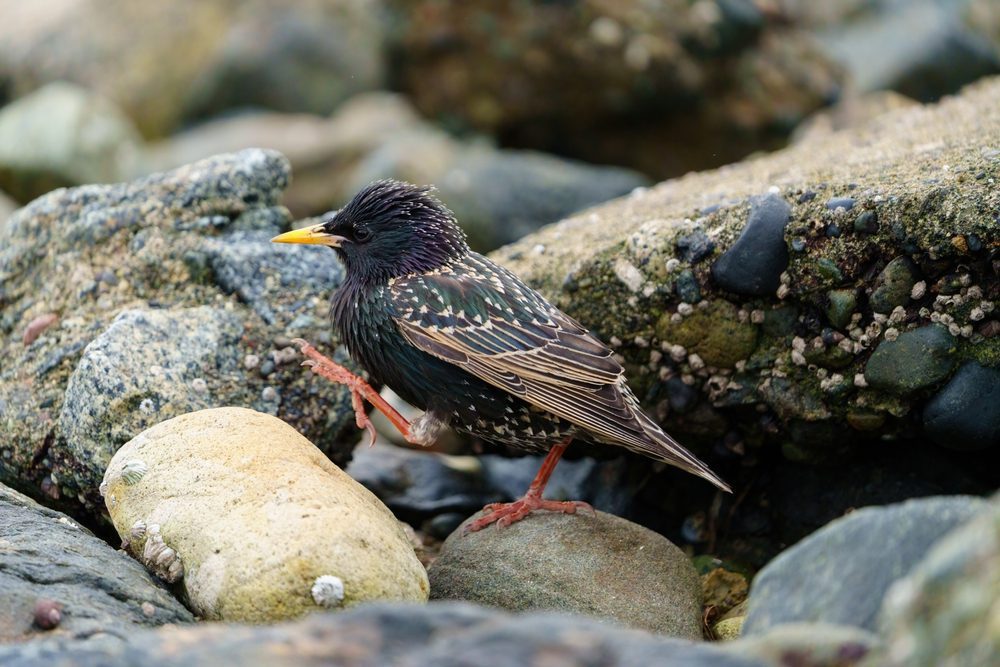
The European Starling, scientifically known as Sturnus vulgaris, is a widespread and adaptable black bird species found in Michigan. Here are some key facts to help birdwatchers identify and appreciate these enigmatic creatures:
Appearance:
The European Starling is a medium-sized black bird with a strong and chunky body, measuring about 7-8 inches in length (most common bird).
During the breeding season (breeding season), adult males display a glossy black body with iridescent purple and green hues and white spots (black feather).
In contrast, adult females and non-breeding males have a duller plumage (adaptability) with dark brown feathers and small white speckles (black feather).
When in flight, their wings appear short and rounded with a prominent white wing bar (white wing bar).
Habitat:
European Starlings thrive in a variety of habitats, including urban areas (urban area), agricultural fields (agricultural field), open fields (open field), and open woodlands (open woodland).
They are highly adaptable and can be found across North America (north america), making them one of the most common bird species in the region (most common bird).
These opportunistic feeders (opportunistic feeder) take advantage of a wide range of food sources, including insects, fruits, seeds, and even garbage.
Behavior:
European Starlings are highly social birds that form large flocks (large flock), especially during the winter months (wintering ground).
Their vocalizations are varied and include a repertoire of whistles, chattering, and mimicry of other bird species (bird specie).
They are known for their impressive murmurations, which are intricate and synchronized aerial displays performed by large groups of starlings (bird specie).
Reproduction:
During the breeding season, European Starlings build nests (nests of other bird) in tree cavities and man-made structures (adaptable bird).
They are considered cavity nesters and often compete with native bird species for nesting sites (nests of other species).
The female starling lays a clutch of 4-7 eggs, which hatch within two weeks (bird specie).
Both parents share in the incubation and feeding duties until the young fledge and become independent (breeding season).
5. Baltimore Oriole
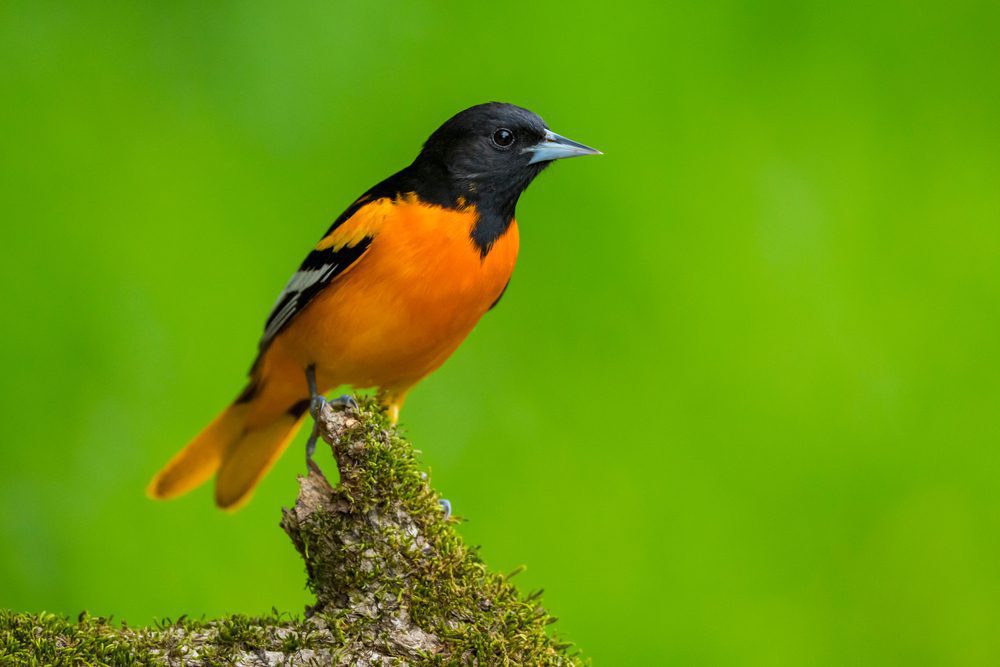
The Baltimore Oriole (Icterus galbula) is a stunning black bird with bright orange plumage that is frequently spotted in Michigan. Here is all you need to know about this mesmerizing bird:
Appearance:
The male Baltimore Oriole is easily recognizable with its vibrant orange chest and belly, contrasting with its black head, back, and wings. It also features a white patch on its wings and a black beak.
Female Baltimore Orioles have a more subdued appearance, with olive-brown feathers and hints of orange on their chest and belly.
Habitat:
Baltimore Orioles can be found in various habitats across Michigan, including forests, woodlands, and even urban areas with sufficient trees and vegetation. They tend to prefer areas near water sources, such as rivers, lakes, and wetlands.
These birds are also commonly spotted in parks and gardens, where they can find an abundance of nesting materials and food sources.
Behavior:
Baltimore Orioles are known for their impressive singing abilities, with melodious and flute-like tunes. Their songs can often be heard during the breeding season, as the males vocalize to attract mates and establish their territory.
They are skilled nest builders, constructing woven pouch-like nests using fibers from plants such as milkweed and grasses, hanging them from branches at a height that deters predators. The nests are cleverly designed to look like a part of the tree.
Diet:
Baltimore Orioles primarily feed on a wide variety of insects, including beetles, caterpillars, and spiders. They are also fruit lovers and have a particular fondness for nectar, which they obtain by piercing the base of flowers with their beaks. Fruits like berries, oranges, and grape jelly are also a favorite snack.
Migration:
Baltimore Orioles are a migratory species, arriving in Michigan during the summer months to breed and raise their young. They typically embark on a remarkable journey, traveling from their wintering grounds in Central America or northern South America to their breeding grounds in North America.
Look for them in Michigan from April to early October, as they migrate to warmer climates when the weather starts to cool down.
6. Rusty Blackbird

The Rusty Blackbird (Euphagus carolinus) is an enigmatic black bird found in Michigan. With its distinctive appearance and behavior, it captivates the attention of birdwatchers and nature enthusiasts alike. Let’s explore this fascinating black bird in more detail.
Appearance and Characteristics:
The Rusty Blackbird is slightly larger than a Red-winged Blackbird, measuring around 9.5 inches in length.
It has a black body, but its plumage is not rusty as its name suggests. Instead, it exhibits a glossy black color with a slight greenish sheen.
During the breeding season, the male Rusty Blackbird displays rusty edges on its feathers, which gives it a unique appearance.
It has bright yellow eyes that contrast beautifully against its dark plumage.
In flight, the Rusty Blackbird displays white wing patches, providing a striking visual contrast.
Habitat and Range:
Rusty Blackbirds can be found in various habitats throughout Michigan, including wetlands, swamps, bogs, and forested areas near water bodies.
They prefer areas with dense vegetation, such as shrubs or overgrown fields, where they can find ample food and nesting opportunities.
While they breed in the northern parts of Michigan, during the winter months they migrate south to the southeastern United States and even as far as Central and South America.
Behavior and Diet:
Rusty Blackbirds are somewhat elusive and less social compared to other black bird species. They tend to be solitary or found in small family groups, making them a special sighting for birdwatchers.
They are opportunistic feeders, consuming a variety of food including insects, fruits, seeds, and aquatic invertebrates.
During the breeding season, their diet shifts towards more protein-rich food, such as insects and spiders, to meet the demands of raising their young.
Conservation Status and Threats:
The Rusty Blackbird is currently listed as a species of conservation concern due to a significant decline in its population across North America.
The exact reasons for its decline are not fully understood, but habitat loss, pollution, and changes in wetland ecosystems are believed to be contributing factors.
Efforts are underway to study and conserve the Rusty Blackbird population through habitat restoration, monitoring, and research.
7. Black-Billed Magpie
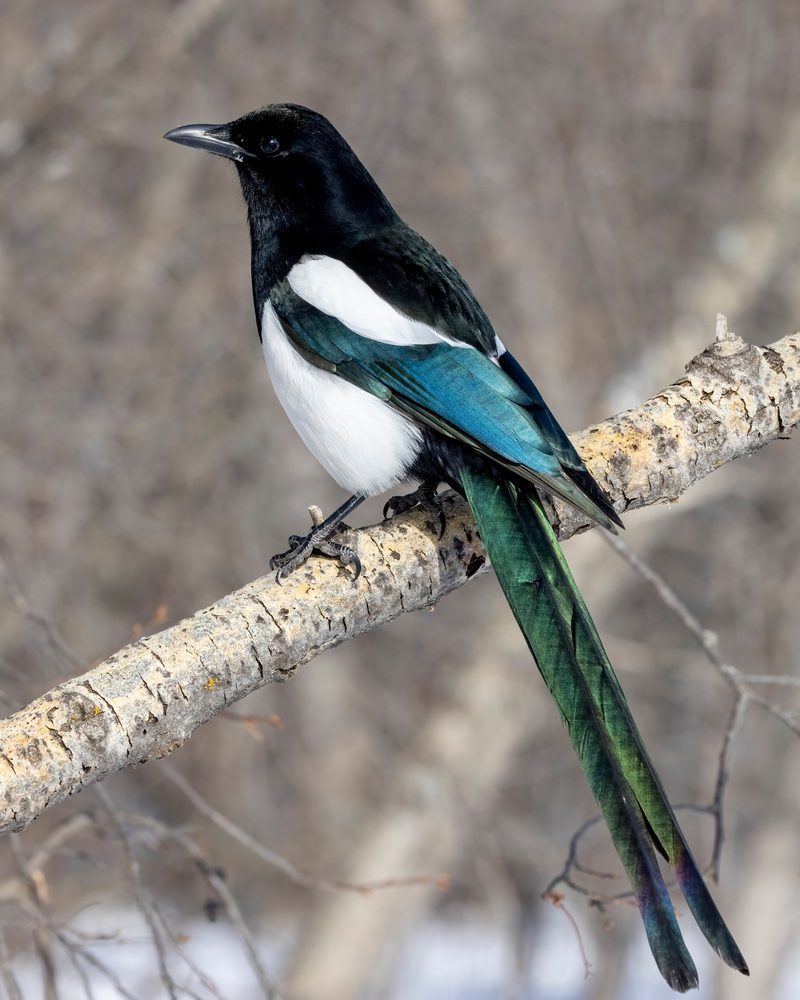
The Black-Billed Magpie (Pica hudsonia) is an intriguing black bird that can be found in various parts of North America, including Michigan. With its striking black and white plumage, this bird is easily recognizable and often captures the attention of birdwatchers.
Habitat and Distribution:
The Black-Billed Magpie is commonly found in open habitats such as meadows, parks, and woodlands.
It prefers areas with scattered trees or shrubs, which provide suitable nesting sites.
In Michigan, the Black-Billed Magpie can be spotted in regions with open fields, farmlands, and urban areas.
Characteristics:
The Black-Billed Magpie is a medium-sized bird with a black body and white markings on its wings and belly.
It has a long, pointed tail that adds to its overall graceful appearance.
One distinguishing feature of this species is its black bill, which gives it its name.
Adult Black-Billed Magpies have a metallic sheen to their plumage, particularly noticeable on their wings.
Behavior and Diet:
Black-Billed Magpies are known to be intelligent and highly adaptable birds.
They are opportunistic feeders, consuming a wide range of food including insects, small mammals, birds’ eggs, fruits, and carrion.
These birds are also known for their habit of collecting shiny objects, leading to their reputation as “thieves” or “hoarders”.
Nesting and Reproduction:
Black-Billed Magpies build large, domed nests made of twigs and lined with grass and mud.
The nests are usually placed in the trees or shrubs, providing protection from predators.
They are known to be territorial during the breeding season, aggressively defending their nests and surrounding areas.
Interesting Fact:
Black-Billed Magpies have a complex vocal repertoire and are known for their ability to mimic a variety of sounds, including those of other birds and even human voices.
8. Common Raven
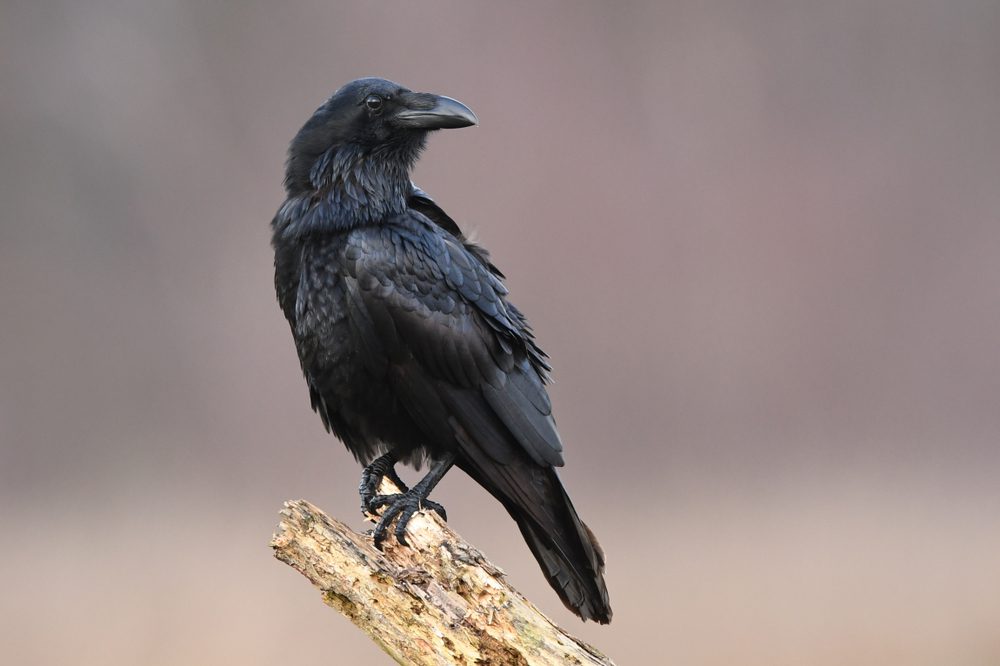
The Common Raven (Corvus corax) is a large, black bird that can be found in various habitats throughout Michigan. Known for its intelligence and adaptability, the Common Raven is one of the most fascinating members of the corvid family.
Characteristics:
The Common Raven is a sizable bird, measuring around 24 to 27 inches in length and weighing up to four pounds.
It has a black glossy plumage with a thick, curved black beak.
The raven has a wingspan of approximately 46 to 56 inches, making it an impressive sight when in flight.
One distinguishing feature of the Common Raven is its deep, resonant croaking call, which can be heard from a considerable distance.
Habitat and Distribution:
Common Ravens are highly adaptable and can be found in a wide range of environments, including forests, mountains, open fields, and even urban areas.
They are a common sight in Michigan, particularly in the Upper Peninsula, where they thrive due to the presence of vast expanses of forest and open areas.
While they are permanent residents in the state, they may also move around during different seasons.
Behavior and Diet:
Common Ravens are highly intelligent and known for their problem-solving abilities. They exhibit complex social behavior and often work together in pairs or small groups.
These birds are opportunistic feeders and have a varied diet. They scavenge for carrion, insects, small mammals, fruits, and even eggs from other birds’ nests.
Ravens are notorious for their ability to mimic sounds, including human voices. Their vocal repertoire is extensive and includes a range of calls, cackles, and even musical notes.
Interactions with Other Species:
The Common Raven is an adept nest thief and has been observed stealing eggs or raiding nests of other bird species, particularly during the breeding season.
They are known to harass and mob larger birds of prey, such as hawks and owls, sometimes even stealing their food.
Despite their opportunistic behavior, Common Ravens also interact with other bird species in mutually beneficial ways, such as following wolf packs to scavenge on their kills.
Conservation Status:
The Common Raven has a stable population and is not currently considered a species of concern in Michigan or North America.
However, like many bird species, they face threats such as habitat loss and pesticide use, which can indirectly affect their food sources.
9. Hooded Oriole
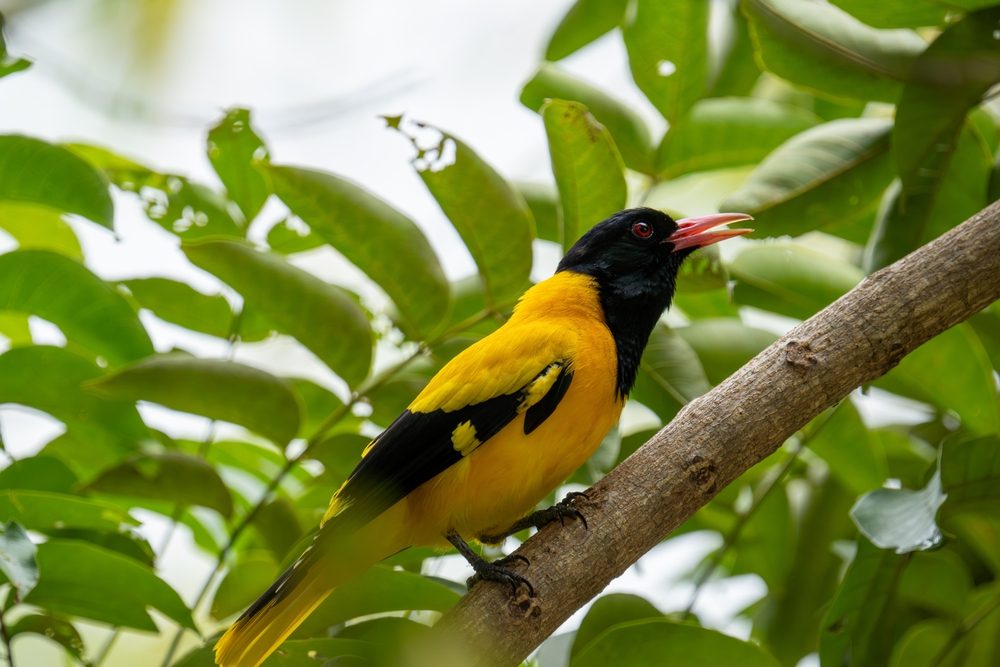
The Hooded Oriole (Icterus cucullatus) is a striking black bird with a vibrant touch of yellow. Here’s everything you need to know about this enigmatic species found in Michigan.
Characteristic:
Size: Hooded orioles measure around 7 to 8 inches in length.
Appearance: Adult male Hooded Orioles have a black body with a vibrant orange-yellow hood, back, and breast. They also possess a long, slender, downward-curving black beak. Females and juveniles are less vibrant, with a yellowish coloration on their undersides and a grayish-brown back.
Call: The male Hooded Oriole produces a rich, melodic song consisting of whistling tones. You might hear them uttering a soft “wick-a-chick” or a “chew-chew” call.
Habitat and Distribution:
Hooded Orioles are primarily found in open woodlands, including orchards, riverbanks, and urban areas with sufficient tree cover.
In Michigan, they are considered rare visitors during the breeding season, as the species’ main breeding range spans across the southwestern United States and Mexico.
Behavior and Diet:
Hooded Orioles are opportunistic feeders, primarily feeding on nectar from flowers. They are particularly fond of the sweet blossoms found in orchards.
Apart from nectar, they also consume fruits, insects, and spiders.
Males often defend territories and assert dominance through their elaborate songs.
Breeding:
Hooded Orioles build their pendulous, pouch-like nests, typically hanging from the tips of tree branches. These nests are intricately woven with plant fibers, and sometimes bits of paper or spider silk are added.
The female lays three to five eggs, which she incubates for about two weeks. Both parents participate in feeding the young.
Migration and Wintering Grounds:
Hooded Orioles are neotropical migrants, spending winters in Mexico and Central America before returning to their breeding grounds in the United States.
They migrate to Michigan during the late spring and summer months, adding to the diverse avian population.
10. Orchard Oriole
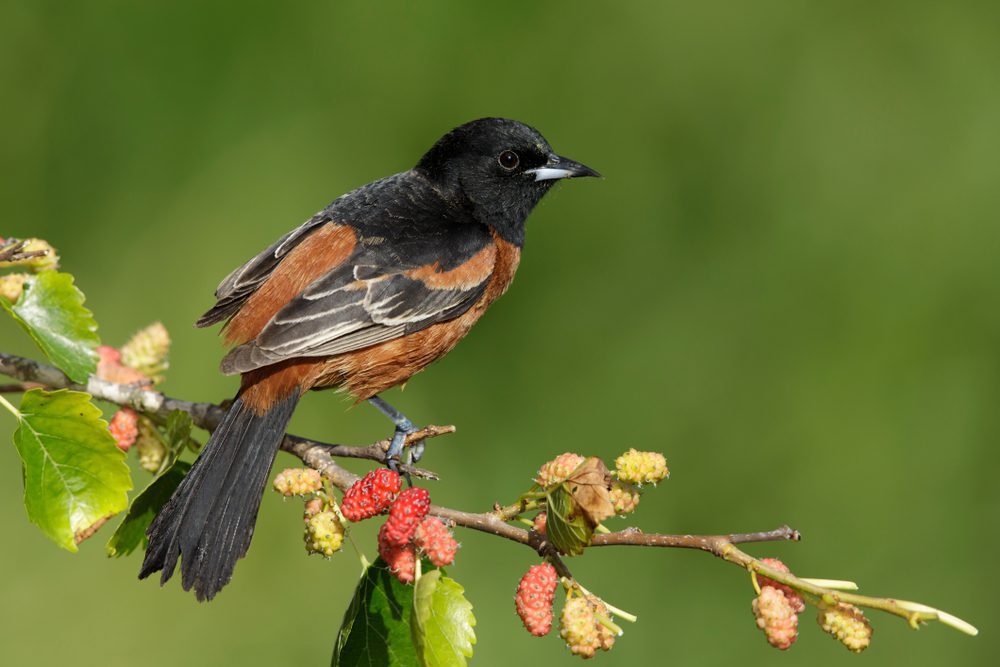
The Orchard Oriole (Icterus spurius) is a captivating black bird species found in Michigan. With its distinctive appearance and enchanting song, it is a favorite among birdwatchers. Let’s delve into the intriguing world of the Orchard Oriole and discover fascinating details about this remarkable avian creature.
Appearance and Behavior:
The male Orchard Oriole is a stunning sight with its contrasting black body and vibrant chestnut plumage. Its black wings and tail are adorned with white wing bars, while its eyes gleam with a striking yellow hue.
Females, on the other hand, have a more subdued appearance, featuring an olive-green body with yellowish underparts.
These black birds have a slender build and measure around 6 to 7 inches in length.
Orchard Orioles are skilled songsters, known for their melodious calls that resonate through orchards and woodlands. Their songs are a pleasing mix of musical notes and whistles, making them a delight to listen to.
Habitat and Distribution:
Orchard Orioles inhabit a variety of habitats, including orchards, groves, woodlands, and open fields. They seek out areas with scattered trees that provide suitable nesting sites.
During the breeding season, which typically occurs from May to August, these birds can be found in Michigan and other parts of North America. They migrate to South and Central America during winter, making their return in the summer months.
Nesting and Breeding:
Orchard Orioles are known for their unique nesting behavior. Unlike other bird species that build their own nests, they prefer to take over abandoned nests of other species, such as the Baltimore Oriole or the American Robin.
The female builds a neatly woven nest, using grass, plant fibers, and other fine materials, within the chosen nest structure.
After the nest is complete, the female lays around 3 to 5 eggs, which she incubates for approximately 12 to 14 days. Once hatched, both parents take turns feeding the chicks until they fledge.
Diet and Feeding:
Orchard Orioles are primarily insectivorous, feeding on a diet that includes insects, spiders, and other small invertebrates. They are also known to enjoy nectar from various flowers, especially during the breeding season when they require extra energy.
These adaptable birds may also feed on fruits, berries, and even nectar from hummingbird feeders.
11. Shiny Cowbird
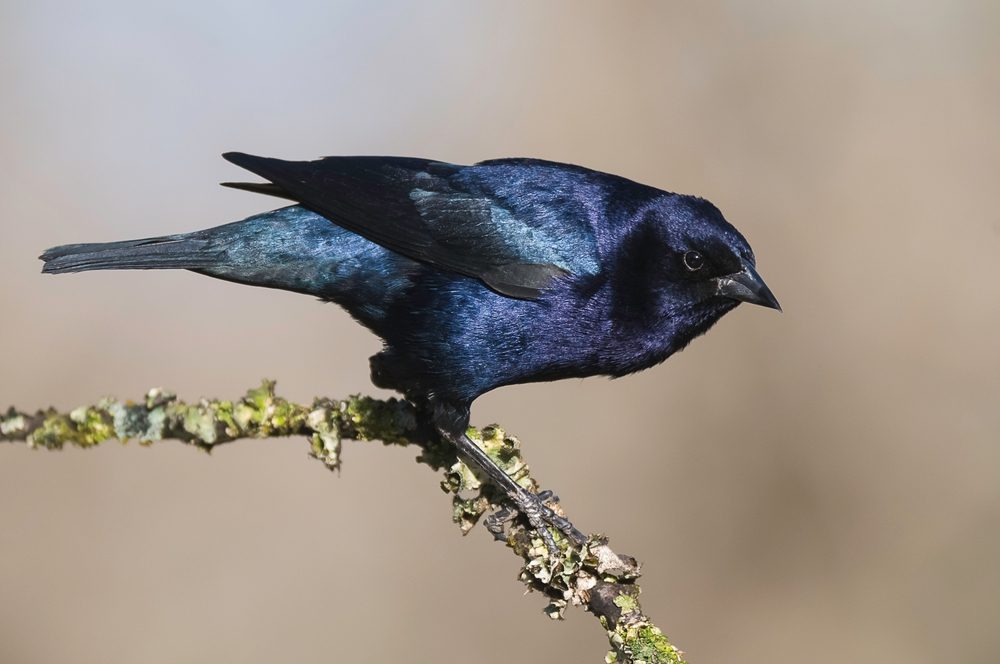
The Shiny Cowbird (Molothrus bonariensis) is an intriguing black bird species that can be found in Michigan during certain times of the year. Let’s explore some key facts about this fascinating avian resident.
Appearance and Identification:
The adult male Shiny Cowbird is predominantly black with a glossy, iridescent sheen on its feathers. It has a slightly downward-curving bill and striking yellow eyes.
Females and juveniles have a more subdued appearance, with dark brown plumage and paler underparts.
One distinctive feature of the male Shiny Cowbird is the presence of a white patch on its wing, visible when it is in flight.
Habitat and Distribution:
Originally native to South America, the Shiny Cowbird is a brood parasitic species that opportunistically lays its eggs in the nests of other bird species.
During the breeding season, Shiny Cowbirds can be found in open habitats such as agricultural fields, open woodlands, and urban areas with suitable host species.
They are known to migrate and can be found in Michigan during the summer months.
Behavior and Adaptability:
Shiny Cowbirds exhibit a unique reproductive strategy known as brood parasitism, wherein females lay their eggs in the nests of other bird species.
The host birds unknowingly raise the Shiny Cowbird chicks, often at the expense of their own offspring.
This opportunistic feeding behavior allows the Shiny Cowbird to adapt and thrive in a wide range of environments.
Notable Facts:
The Shiny Cowbird is known to parasitize a variety of bird species, including the Eastern Meadowlark, Orchard Oriole, and Brown-headed Cowbird.
It is considered an invasive species in some areas due to its impact on native bird populations.
Shiny Cowbirds are highly adaptable in terms of their diet, feeding on a diverse range of foods, including insects, seeds, fruits, and nectar.
12. Eastern Meadowlark
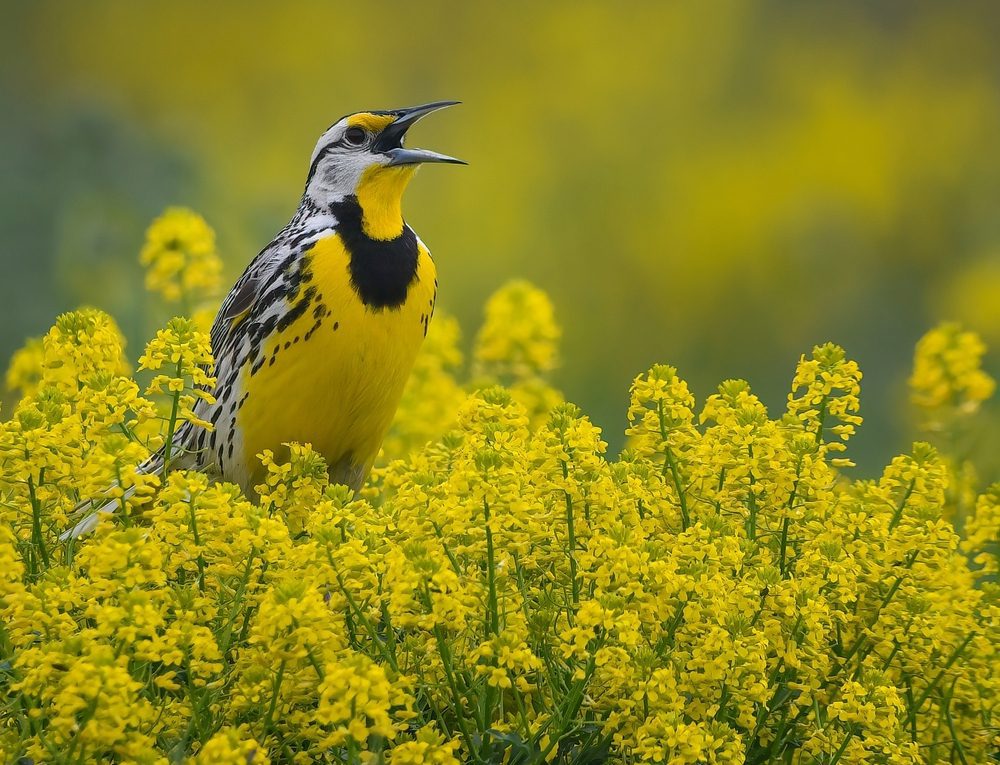
Eastern Meadowlark is a captivating black bird species that can be found in Michigan. With its distinct appearance and unique characteristics, it has become a favorite among birdwatchers. In this section, we will delve into the fascinating world of Eastern Meadowlarks and explore their habitat, behavior, and significance in the avian kingdom.
Appearance:
The Eastern Meadowlark is a medium-sized black bird, measuring around 9.5 to 11.5 inches in length. Its body is predominantly black, with a bright yellow chest and throat.
One of the distinguishing features of the Eastern Meadowlark is its striking yellow eye, which adds to its allure. This vibrant characteristic sets it apart from other black bird species found in Michigan.
Habitat and Distribution:
Eastern Meadowlarks are commonly found in open fields, grasslands, and meadows throughout North America, including Michigan. They thrive in areas with sufficient vegetation and open spaces.
These adaptable birds can also be spotted in agricultural fields, pastures, and even urban areas with large open spaces. However, they prefer habitats with less human disturbance.
Behavior and Vocalization:
Eastern Meadowlarks have a beautiful melodic song that resonates across their habitat. Their distinctive flute-like notes can often be heard during their breeding season, which typically starts in April and lasts till August.
They are known for their impressive displays during courtship, where the male Eastern Meadowlark perches on a prominent location and sings to attract potential mates.
These black birds are primarily ground-dwellers, foraging for insects, seeds, and small invertebrates in open areas. They are considered opportunistic feeders, taking advantage of available food sources.
Significance and Conservation:
The Eastern Meadowlark plays a vital role in maintaining ecological balance within its habitat. By consuming insects and seeds, they help control pest populations and aid in seed dispersal.
However, like many other bird species, Eastern Meadowlarks face threats such as habitat loss and fragmentation caused by urbanization and agricultural practices. Conservation efforts are essential to preserve their populations and ensure their continued presence in Michigan.
13. Western Meadowlark

The Western Meadowlark (Sturnella neglecta) is a captivating black bird species that can be found in Michigan. With its distinct appearance and enchanting song, this bird is a favorite among birdwatchers. Let’s delve deeper into the characteristics and behaviors of this enigmatic bird.
Appearance:
The Western Meadowlark has a black body with vibrant yellow plumage on its underparts and throat.
Its wings are adorned with a white wing bar that creates a striking contrast against its black feathers.
With a long tail and black body, the Western Meadowlark showcases a unique and elegant silhouette.
Habitat and Distribution:
This species of blackbird is predominantly found in open habitats such as meadows, grasslands, and agricultural fields.
The Western Meadowlark is a year-round resident in Michigan, making it a common sight during the summer months and throughout the year.
It can also be spotted in urban areas with open spaces, providing a delightful surprise to bird enthusiasts in both rural and urban settings.
Distinctive Features:
One of the most distinctive features of the Western Meadowlark is its melodious song. Birdwatchers often listen for its flute-like call that echoes across open fields.
As an opportunistic feeder, it primarily feeds on insects, seeds, and small fruits found within its habitat.
During the breeding season, the Western Meadowlark builds its nest directly on the ground, hidden within vegetation to provide protection for its young.
Conservation Status:
While the Western Meadowlark is currently listed as a species of least concern, it is important to monitor its population due to habitat loss and changes in land use practices.
Conservation efforts focused on preserving open habitats and maintaining suitable nesting grounds can contribute to the preservation of this remarkable black bird species.
14. Yellow-Headed Blackbird
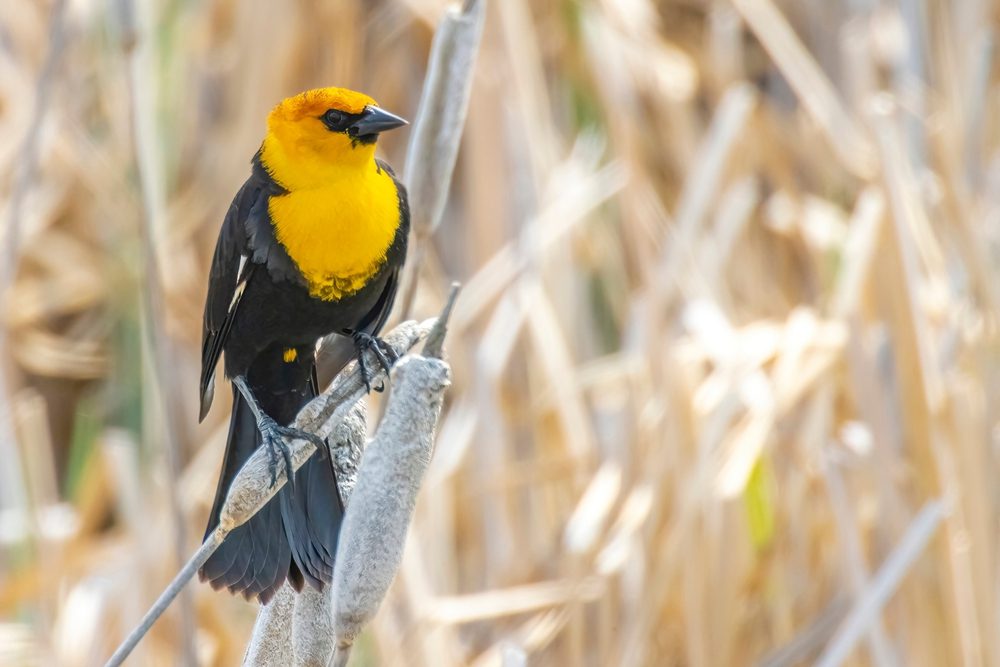
The Yellow-Headed Blackbird (Xanthocephalus xanthocephalus) is a striking bird known for its vibrant yellow head and black body. It is native to North America and can be found in various wetland habitats, including marshes, meadows, and prairie potholes. Let’s explore some interesting facts about this enigmatic black bird:
Appearance and Features:
As the name suggests, the Yellow-Headed Blackbird is recognized for its bright yellow head, which contrasts sharply with its black body. This coloration is most prominent in adult males during the breeding season, making them quite a sight to behold.
On average, male Yellow-Headed Blackbirds measure around 9-11 inches in length, while females are slightly smaller. They have a sturdy build and a relatively long tail, which adds to their striking appearance.
Habitat and Range:
These blackbirds are primarily associated with wetland habitats, including freshwater marshes, wet meadows, and even roadside ditches. They are often found in areas with cattails, reeds, and other emergent vegetation, which provide them with suitable nesting sites and food sources.
2. Range:Yellow-Headed Blackbirds are native to western North America, with their breeding range extending from central Canada to the western United States. During the winter months, they migrate to southern areas of the United States and northern Mexico.
Behavior and Diet:
Like many blackbird species, Yellow-Headed Blackbirds are highly gregarious birds. They are known for their boisterous calls, which can be heard during territorial disputes or when forming large flocks. This social behavior adds to the enigmatic nature of these birds.
Yellow-Headed Blackbirds have an adaptable diet. They feed on a variety of foods, including seeds, insects, small invertebrates, and even grains in agricultural fields. This opportunistic feeding behavior allows them to thrive in different habitats.
Conservation Status and Threats:
While the Yellow-Headed Blackbird is not currently considered globally threatened, some populations have experienced declines due to habitat loss and degradation. Wetland destruction and the conversion of natural habitats for agriculture
15. Brewer’s Blackbird

Brewer’s Blackbird (Euphagus cyanocephalus) is a fascinating black bird species found in Michigan. With its sleek black body, yellow eye, and unique characteristics, it stands out among the diverse avian population of the region. Let’s delve deeper into the intriguing details of this enigmatic bird:
Appearance and Identification:
The adult male Brewer’s Blackbird boasts a glossy black plumage, making it easily recognizable.
Its yellow eye adds a striking contrast to its dark features.
During breeding season, males display vivid iridescent colors on their heads and bodies.
Females, on the other hand, have a more dull and grayish appearance.
Behavior and Habitat:
Brewer’s Blackbirds are highly adaptable and can be found in a variety of habitats, including urban areas, agricultural fields, open woodlands, and even suburban parks.
They are often seen in large flocks, especially during the winter months when they gather at their wintering grounds.
Opportunistic feeders, Brewer’s Blackbirds have a varied diet that includes insects, seeds, fruits, and even small vertebrates.
Their adaptability and resourcefulness make them a common sight across Michigan.
Nesting and Reproduction:
Brewer’s Blackbirds are known to be nest parasites, meaning they lay their eggs in the nests of other bird species. This behavior is known as brood parasitism.
The female Brewer’s Blackbird lays eggs in nests belonging to other bird species, such as American Robins or Brown Thrashers. The host birds unknowingly incubate and raise the young Brewer’s Blackbirds.
This behavior allows Brewer’s Blackbirds to focus their energy on breeding and raising more offspring, rather than building and maintaining their own nests.
Conservation Status:
The Brewer’s Blackbird is considered a species of least concern, as it has a wide range and a stable population.
However, like many other bird species, it faces threats such as habitat destruction and climate change. Conservation efforts aimed at preserving their diverse habitats are crucial for their long-term survival.
Conclusion
In conclusion, Michigan is home to a fascinating array of black birds that can captivate any birdwatcher’s heart. From the sleek and sophisticated Common Grackle to the elusive and enigmatic American Crow, these dark-feathered creatures add a touch of mystery to our beautiful state. Whether you are a seasoned birdwatcher or just beginning to explore this hobby, taking the time to spot and identify these black birds can be a thrilling and rewarding experience.
So grab your binoculars, head out to your local park or nature reserve, and start searching for these remarkable creatures. Remember, patience and perseverance are key when it comes to birdwatching. These black birds may be elusive at times, but the thrill of spotting them in their natural habitat
FAQ
Are blackbirds considered pests?
Blackbirds are not considered pests, but they can become a nuisance in large numbers. They are protected under the Migratory Bird Treaty Act, so it is important to use humane methods to deter them if they are causing damage to property.
How do I attract blackbirds to my backyard?
Blackbirds are often attracted to backyards that have a diverse range of vegetation, including trees, shrubs, and flowers. Providing a water source, such as a birdbath, can also attract blackbirds. Additionally, offering bird feeders with seeds and suet can entice blackbirds to visit and stay in your backyard.
What is the habitat of blackbirds in Michigan?
The habitat of blackbirds in Michigan varies, as some species prefer open fields and marshes while others can be found in wooded areas. However, all 15 species listed in this guide can be found in Michigan, with some being more common in certain regions than others. It’s best to consult a local birdwatching guide for specific locations and habitats for each species.
What is the difference between a crow and a blackbird?
While both crows and blackbirds are classified as black birds, there are several key differences between the two. Crows are larger and have a heavier bill, while blackbirds have a more slender and pointed bill. Crows also have a more robust and rounder body shape, while blackbirds have a slimmer and more elongated body. Additionally, crows are more social and tend to form large flocks, while blackbirds are more solitary and tend to stick to smaller groups. Lastly, crows have a distinctive cawing call, while blackbirds have a melodic singing voice.
How can I identify different types of blackbirds?
Learn about the different species: Start by familiarizing yourself with the various types of blackbirds found in Michigan, such as the Common Grackle, Red-winged Blackbird, and Rusty Blackbird. Look at physical characteristics: Observe the size, shape, and color of the bird. For example, the Rusty Blackbird has a rusty brown color while the Common Grackle has a sleek black body with a long tail. Pay attention to their behavior: Different species of blackbirds have distinct behaviors. For instance, the Red-winged Blackbird is known for its loud and musical calls, while the Brown-headed Cowbird is notorious for laying its eggs in other birds’ nests. 4.

